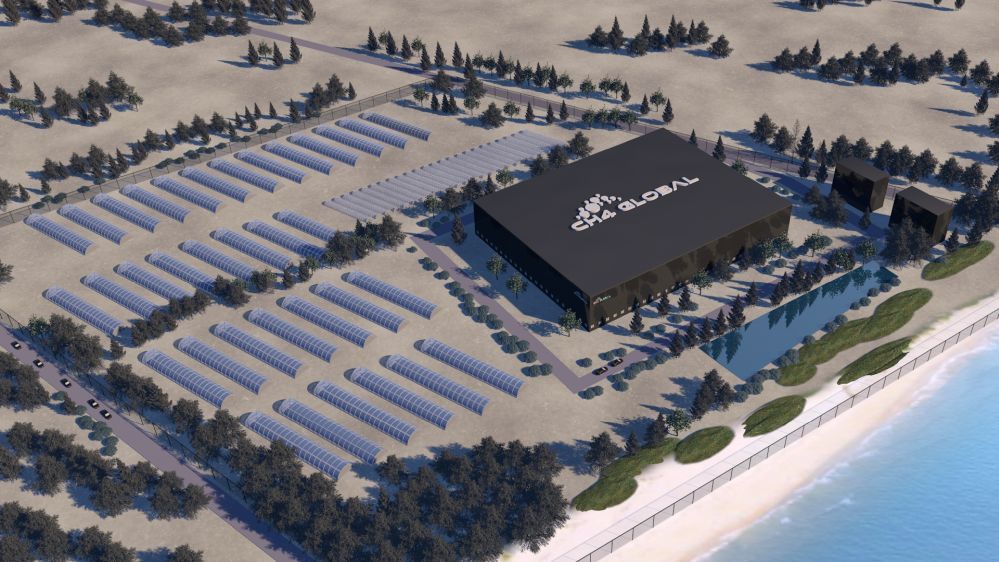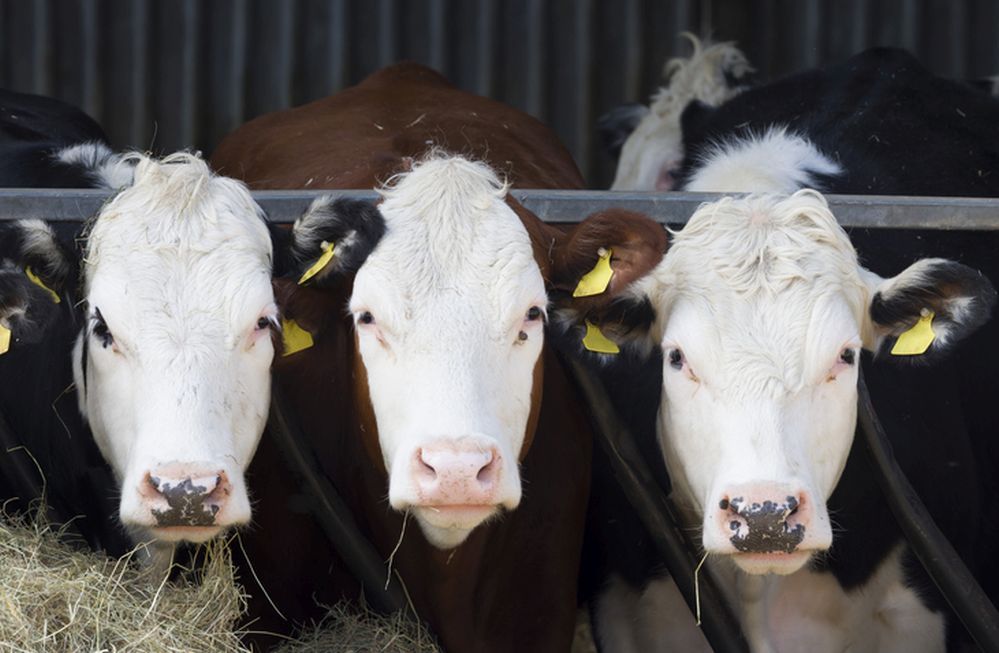[Disclosure: AgFunderNews’ parent company, AgFunder, is an investor in CH4 Global.]
- CH4 Global, a startup dedicated to slashing methane emissions from ruminant livestock using red seaweed-based feed supplements, has announced the first close ($29 million) of a $45 million series B round.
- CH4 Global’s Methane Tamer supplement reduces ruminants’ methane emissions by up to 90%.
- The round, which was led by DCVC, DCVC Bio, and Cleveland Avenue with participation from other investors, brings the firm’s cumulative funding to nearly $47 million.
- The capital will be used to build and validate a production facility in southern Australia producing seaweed that can supplement the diets of 30,000 cows, generating annualized revenues of up to $20 million.
- Larger facilities capable of supplying millions of animals are in the pipeline.
Enteric methane reduction strategies
A potent greenhouse gas, methane is produced in ruminants such as cows and sheep in a stomach compartment called the rumen. Here, microbes break down complex carbs to produce carbon dioxide and hydrogen, which are in turn converted into methane by another set of microbes (methanogens) and belched out.
Several companies have developed feed additives claimed to inhibit the production of enteric methane, from DSM (3-NOP—trade name Bovaer), to Agolin (a blend of plant extracts) and Mootral Ruminant (garlic and citrus extracts) to CH4 Global, Symbrosia, Future Feed, Dulabio and Volta Greentech (red seaweed extracts, which contain methane inhibitors such as bromoform). These generally work by disrupting the metabolic pathways of methanogens.
Of the available solutions above, red seaweed (Asparagopsis) is widely understood to be the most effective, but presents production and scaling challenges, prompting some startups such as Number 8 Bio to explore other means of producing the bioactives in seaweed such as microbial fermentation.
CH4 Global—which has operations in the US and Australia—tackles the scaling issue with a proprietary land-based production system that cofounder and CEO Dr. Steve Meller claims is significantly more efficient that competitive approaches to growing seaweed for feed supplements.

Scaling up production of red seaweed
One challenge when growing photosynthetic microorganisms such as Asparagopsis in tanks on land is that as they multiply, they block other cells in the tank from receiving light, topping out at relatively low densities, which makes scaling a huge challenge.
CH4 Global has overcome this challenge with covered outdoor ponds that enable it to grow the seaweed at significant scale, claimed Meller. “We have shown that we can efficiently and effectively grow it at a much larger scale, frankly, than anybody else. And we can do so in a way where we don’t limit the propagation and the growth rates of the seaweed.”
He added: “Growing it in the ocean is not commercially feasible in any way, shape, or form, so most companies have moved to a land-based system in tanks that are up to 5,000 liters, but as you increase the density the seaweed can’t get sufficient light, and it’s just not commercially viable.
“We’re building ponds at our new facility just north of Port Lincoln in South Australia that are 160,000 liters and designed to optimize the current and fluid flows so you can still get light penetration even as you double and continue to double and replicate. So there are no dead zones, no spots where current doesn’t flow, no locations where light isn’t penetrating at a certain intensity.
“Our profit margins will be in excess of 40% and our COGS (cost of goods) are four- to seven- and in some cases 10-fold lower than anybody else in this space.”
Meller would not provide details, but claimed his firm’s downstream processing is also more cost efficient than techniques deployed by others in the space such as freeze-drying or oil-based extraction, which he argued were both prohibitively expensive, and damaging to the final product.
“So not only do we have the lowest cost process, we also have the highest quality, we utilize the entire seaweed with nothing extracted, and we formulate that final raw material into a product that is stable with the right release profile and characteristics for the target market.”
“CH4 is exactly the kind of deep tech company the world urgently needs. Their natural and proprietary solution to the vexing global problem of methane from cattle can have a material environmental impact quickly and at scale.” Zachary Bogue, cofounder and managing partner, DCVC
Output from new facility is already committed
The seaweed supplements generated at the new facility, which will be operational in the middle of 2024, have already been allocated to three buyers, he said. “100% of the output has been aligned with three commercial partners: CirPro, Ravensworth, and a third party soon to be announced.
“And that, frankly, is our business model. We’re not building a facility and asking who wants to buy from us? The facilities are designed to match the needs of our commercial partners.”
The next facility, phase 2, will be significantly larger, supplying enough feed supplements for up to four million cows, he said.

“CH4 Global’s secret sauce is its product, plain and simple: the feed additive it has expertly formulated stands apart from other seaweed-based offerings.” Dr. John Hamer, managing partner, DCVC Bio
Improved feed conversion
So what’s the incentive for farmers?
According to Meller: “The costs of the product are covered if the farmer gets a modest 2-3% increase in farm gate prices, or a feed saving [an improved feed conversion ratio when using the supplement means farmers can feed their cows around 5.5-6% less]. If they get both, they make money! Our focus is to ensure farmers have a net positive return on their investment.”
Second, he said, firms are under growing pressure to reduce greenhouse gas emissions, such that using feed that reduces enteric methane may ultimately become a condition of doing business.
Longer term, he said, we can also expect carbon taxes on agriculture, so the pressure to tackle methane is only going to increase. “If you’re going to avoid those taxes you need to mitigate methane at significant amounts. And that’s what we do.”
Over 150 countries have signed the Global Methane Pledge, which aims to reduce methane emissions by 30%, he noted. This followed a report issued by the IPCC in May 2021 describing methane as “the single biggest lever for climate change impact in the next 25 years.”




